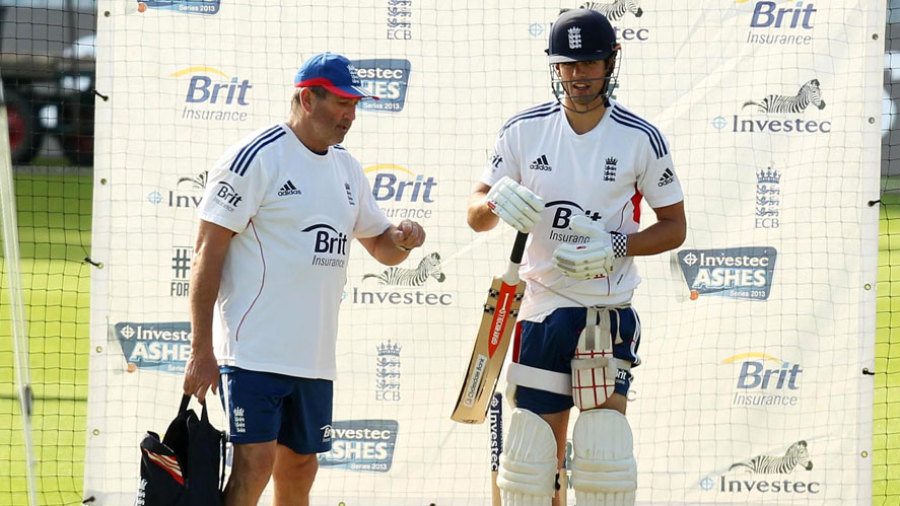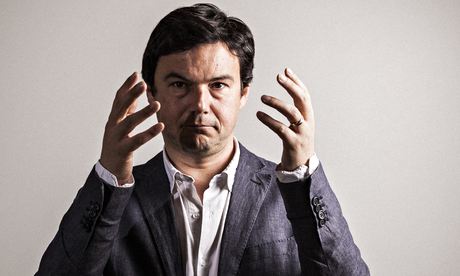
In the 90s, Pakistan were just vastly better at cricket than India, and Pakistanis assumed it had always been so. They viewed Sachin Tendulkar as the leader of a group of wannabes and never-will-bes, not a match-winner. © AFP
Sachin Tendulkar’s retirement from limited-overs cricket in December 2012 brought them out in full force. By the time he said goodbye to Test cricket, nearly a year later, they were tired and outnumbered, but clung desperately to their self-created bubble. Beyond the plethora of heartfelt eulogies was a world – mostly confined to the privacy of living rooms and online message boards – where Tendulkar wasn’t the God worshipped by a billion. Here, where contrarians and trolls live, he was far from the match-winner he was made out to be. Inevitably, this universe consisted overwhelmingly of Pakistanis. For a generation of them, Tendulkar’s career wasn’t just the story of arguably the greatest batsman of his era, and unarguably the biggest star in modern cricket, but the story of the prism through which Pakistanis saw their place in the world – though they’d be loathe to admit it.
It seems odd to argue that a foreign sportsman could have such a far-reaching influence on a country’s youth, but the view that Pakistanis had of India – and by extension of Tendulkar – is unique. Their attitude towards the Indian team was how Pakistanis proved they were Pakistani, as the post-Zia nation over the last three decades went from isolation, and in search of recognition, to a place the world knows about – not necessarily for the right reasons. It’s no coincidence that at the time the rest of the cricketing firmament prostrated before Tendulkar, a major Pakistani news channel ran a segment about how Javed Miandad, Younis Khan and Mohammad Yousuf were each his equal.
The rejection of the Hindu – and by definition of India – was how you became Pakistani. From Pakistan’s first tour in 1952-53, when Test captain Abdul Hafeez Kardar took his team only to “monuments and museums that reflected Muslim glories in India, while ignoring the rest” – as described in Shashi Tharoor’s Shadows Across the Playing Fields – to their acceptance of Imran Khan’s opinion that Inzamam-ul-Haq was a better player of pace than Tendulkar, this view of India as the other is hardly restricted to cricket. Ayub Khan (the President of Pakistan 1958 to 1969) was a Sandhurst-trained army officer who said a Muslim soldier was equal to ten Hindu soldiers. He worried about how much of East Pakistan (now Bangladesh) was under “Hindu culture and influence.” Pakistani academic Aasim Sajjad Akhtar believes the country’s ideology “is an anti-Indian ideology. It’s a negation, rather than something that stands up on its own.” Defined by what one is not, rather than what one is.
I grew up in the 1990s, when everyone, barring elite Pakistanis, had access to only one source of news (beyond the dailies): the 9pm TV bulletin Khabarnama. Every day it began with the headlines, followed by the latest from around the country. Ten minutes in, we had the Kashmir update – this was our war, but it wasn’t being fought by us or in our cities (unlike the wars in the 2000s, which aren’t our wars – supposedly – but are being fought by us, in our streets). Popular Urdu literature for children at the time focused on the constant state of war Pakistan found themselves in – Afghanistan in the ’80s, Kashmir in the ’90s, and the whole world in the 2000s, if you read author Ishtiaq Ahmed. The only thing the children of the ’90s, regardless of class and economics, could agree on was that Pakistan was in danger and India was the enemy.
It is in this context that one has to consider Pakistan’s view of Tendulkar. Omar Kureishi, the late Pakistani journalist, once said the only two things that could unite his country were war and cricket – incidentally the only two areas in which Pakistan was directly pitted against its neighbour. For all the mistrust and animosity of India cultivated in us, there were no avenues to release it. The only interaction a Pakistani had then with anything Indian was cricket or Bollywood. The latter was overwhelmingly popular and could never be shunned by the majority; it was, and still is, a guilty pleasure. Uncles and aunties may complain all day about India’s soft power eroding Pakistani culture, and yet, the same uncles and aunties watch every Shah Rukh Khan film that hits the theatres. Thus, the cricket team was how one became Pakistani. As the world changed, the opinions shifted but never the ideologies – until 2004, when India toured Pakistan for the Friendship Series and we were struck by the realisation that those two decades of fostering hostility may have been for naught. History seemed irrelevant during that 40-day tour and India’s Lakshmipathy Balaji became an ironic icon.
But I digress. The Indian cricket team of the ’90s wasn’t even worthy of our revulsion; condescension was more apt. Ayub Khan may have been wrong about the inequality of soldiers but the inequality of the cricketers was obvious. From Javed Miandad hitting the six at Sharjah in 1986 until the 2003 World Cup, Pakistan’s ODI record against India read 44 wins and 21 losses – this is what we saw growing up. Pakistan were just better at cricket than India – and we assumed this had always been so. It was through this barometer that Tendulkar was judged – he was the leader of a group of wannabes and never-will-bes and, therefore, not a match-winner.
As if to lend credence to this hypothesis, Tendulkar didn’t exactly prove us wrong when India played Pakistan. Until that 2003 World Cup, he had scored just two centuries in 41 ODI innings against Pakistan – both in the space of a fortnight in 1996, hence lessening their impact, and one of them in a losing cause. He averaged in the mid-30s. Even more significant for the casual Pakistani fan was that both those hundreds came in the first innings of day games, a time when viewership is much lower than usual. Pakistanis had a simple formula by which they judged India: batting second in day/night matches. This scenario saw Pakistan play to their strength and viewership was at its maximum as well (add Friday in Sharjah to the picture and it would be the most stereotypical of Pakistan-India face-offs in the ’90s). It was here that Tendulkar struggled most. During this phase, he averaged under 30 in 21 innings – batting second against Pakistan – with no hundreds. India won only seven of these 21 matches, with Tendulkar scoring just three fifties. His role in this narrative served only to reinforce biases: India were hopeless at chasing and Tendulkar was not a match-winner.

Pakistan cricketers were macho; they were in-your-face, aggressive and only borderline legal. Tendulkar, on the contrary, was cherubic, slightly effeminate (in voice) and squeaky clean. © Getty Images
By comparison, his greatest contemporary Brian Lara punished Pakistan like few others. Lara averaged over 50 batting second, and over 70 in games West Indies won – they won more games than they lost against Pakistan during this time. To a Pakistani, the Lara-Tendulkar debate was never a debate.
But why judge Tendulkar only on his record against Pakistan? For a parallel to this story, you have to look no further than Swedish footballer Zlatan Ibrahimovic’s career (until 2012). During the 2006 football World Cup, the English-based Northern Irish manager Martin O’Neill called him the most overrated player in the world and this was accepted as the establishment line. Zlatan dominated the Italian game like few before him, yet the English believed he was far from world class because he never did it against them; a brace against Arsenal for Barcelona did not count, nor did winners in the Milan derby or the El Clásico have any affect. But then he scored four goals in 90 minutes against England (including that overhead kick) in 2012 and the English begrudgingly acknowledged his genius.
It was this line of thinking that Pakistani fans indulged in too. Our bowling attack was the best in the world – until you did it against them you weren’t worthy. The decade saw Pakistan boast probably the most complete generation of bowlers a country has ever had. Thus while the attitude smacked of superiority, unlike that of English football fans, it felt well-earned.
But it’s not merely what he did, but who he was, that alienated Pakistanis. Social conditioning had taught us that the way to live your life was to go for what you believed you deserved rather than waiting for it to come to you. Our cricketers, like our image of Pakistan, were macho; they were in-your-face, aggressive and only borderline legal. Tendulkar, on the contrary, was cherubic, slightly effeminate (in voice) and squeaky clean. While our players were standing in Justice Qayyum’s court to answer allegations of match-fixing, everyone in India was sure Tendulkar would never do such a thing. And it is no surprise that Pakistanis never warmed to Tendulkar. The two great heroes of the post-Wasim generation were Shahid Afridi and Shoaib Akhtar. They were ephemeral, inconsistent, unorthodox and over the top. He was not.
Yet Tendulkar was much more than a cricketer. He became the face of post-liberalisation India – the rise of the country’s middle class coinciding with his own. In cricket writer Ayaz Memon’s words, “Tendulkar became a metaphor of what is now called the new India… where achievement, and reward, and fate all go hand in hand.” He also became the cornerstone of India’s growth as a cricketing power – on and off the field.
Lest we forget, Australia played only three series against India between 1981 and 1996 (and only one of them in India), while England visited India once between 1985 and 2000. The turn of the century saw an extraordinary rise in these match-ups, not only because India were now the cash cow, but because the Indian team with its newfound confidence – led by Tendulkar – had earned the respect of the cricketing world, except Pakistan perhaps. His debut series, the seventh between Pakistan and India in 11 years, was followed by a nine-year hiatus. At the peak of his career, India played only one Test series against Pakistan, and that series crystallised how Pakistanis saw him.
I refer, of course, to the three-Test series in 1999 (Pakistanis regard the first Test of the Asian Test Championship in February 1999 as the third of the series against India since it came immediately after the Kolkata and Chennai Tests earlier in the year – taking that result into account means Pakistan won the series 2-1 rather than drawing it 1-1). This series featured one of Tendulkar’s greatest Test innings. A fourth-innings masterpiece on a fifth-day pitch while batting with the lower order against Wasim, Waqar and Saqlain – that was how the world saw it. But across the border it was Tendulkar being the gallant batsman he always was and failing to win the match as he always did. The fact that this was his only 30-plus score in six innings of the series merely confirmed the bias: when India won Tendulkar didn’t play a part; India lost despite what he could offer.
***
Until the late 1990s, PTV (Pakistan Television), ruled the roost – except for those who could afford a satellite dish, or an array of similar but cheaper options which were almost always exclusive to Karachi. But the turn of the millennium saw the rise of cable television, providing a whole host of Indian channels. Within five years we went from watching whatever was available on one channel to complaining about not having anything to watch on 80. Among them were a pair of Indian sports networks which brought us the other perspective on Tendulkar and the Indian team. It didn’t take long for the Pakistani attitude towards India to become the same as the Irish attitude towards the English. The average Irishman can support any English football club he likes, but their national team is to be reviled – a dislike fuelled by the irritation with the one-eyed, jingoistic and hypocritical English media.

Cable television in Pakistan only took off after the turn of the millennium. Most of the nation never watched Tendulkar at his peak, when he took apart Shane Warne during the 1997-98 Border-Gavaskar Trophy and Operation Desert Storm soon after. © AFP
Much the same happened in Pakistan. Most of us never watched Tendulkar at his peak since those matches were never broadcast to the overwhelming majority of the country. We did not get to watch Tendulkar take apart Warne during the 1997-98 Border-Gavaskar Trophy, and Operation Desert Storm soon after was a performance most Pakistanis only read about. In Indian Cricket 2000, Raja Mukherjee described Tendulkar as someone who was “No Indian in his method.” He goes on to say, “His batsmanship was of the West Indian mould. Never before did an Indian treat the ball as he did. His method was aggression, his weapon, power. The niceties of grace and classic conventional technique were not for this valiant kid of the Nineties generation. He was born in independent India… he knew not the uncertainties, nor the enforced servility of the pre-independence era. He was born free, to chart his own course.” This was the Tendulkar that Pakistanis missed. All they saw was a man who struggled against one of the great attacks in limited-overs history, and then the run-machine he became in the second half of his career. But as the cablewalas multiplied, Pakistanis became acquainted with the Indian perception of Tendulkar.
Now, you could watch Indian matches, and you did: India’s failure was a victory in itself, and the greatest possible introduction to Schadenfreude. Every time Pakistan beat India, it tasted sweeter. Between the Sharjah series win in 1998 and the tri-nation series victory in 2008, India played 21 finals, of which they won one. One! Tendulkar averaged 26. Your argument, previously based on just matches against Pakistan, only gained strength as you watched Tendulkar fail in crucial games.
Except, right in the middle of this decade, came Centurion – the day most Indians would think Tendulkar settled the debate. But his performance was easily tossed aside as an aberration, against an ageing team that had been in inexorable decline for three years.
More than Tendulkar, it was Sehwag and his generation who frightened Pakistan. Tendulkar was just the same as he had been for the previous decade – to be respected and admired, but not feared. Which explains why, even after Centurion, the Pakistani view of Tendulkar hardly changed. Instead, the anomalies in his record became more important than the bigger picture. From that innings in 2003 to Mohali in 2011, Tendulkar had seven 50-plus scores against Pakistan – only two of those came in wins. He only scored one 100 in 11 Tests against Pakistan after 1999. Pakistanis have grown up with the idea that if a batsman scores a hundred the team was guaranteed a win. Tendulkar’s four great Pakistani contemporaries – Saeed Anwar, Inzamam, Yousuf and Younis – combined to score 51 ODI 100s, only seven of which resulted in losses. Three of Tendulkar’s five ODI 100s against Pakistan were in a losing cause. Of course, the one-eyed ignored the fact that Pakistan always had a better bowling attack than India did. Flip that stat to see the bigger picture and you realise that the four great Pakistanis combined to score two more ODI hundreds than Tendulkar did on his own. But for the non-believers, even this wouldn’t change their minds.

As Tendulkar retired, Pakistanis biases against him disappeared, at least on the surface. Beyond a couple of exceptions, the reaction to his retirement in Pakistan was overwhelmingly positive, almost sycophantic. © BCCI
But as Tendulkar retired, those biases disappeared, at least on the surface. Beyond a couple of exceptions, the reaction to his retirement in Pakistan was overwhelmingly positive, almost sycophantic. It made sense too. Pakistan is no longer the country it was in the ’90s. No longer is it a paranoid local miscreant, some of whose citizens feel victimised: it is now a paranoid worldwide miscreant, all of whose citizens feel victimised. Since 9/11, and the beginning of the Afghan war, the anger is reserved for the United States rather than India. For the 2013 national elections, the two most popular centre-right parties in Pakistan called for peace and love towards India – a fact that went unnoticed outside war-mongering circles because of how small a deal it was.
It is no surprise that, despite the attacks in Mumbai, the past 12 years have been a relatively peaceful era in the countries’ histories. The media and technology boom may have provided platforms for hate-mongers on both sides, but it has also ensured a level of interaction that never existed before. Perhaps peace is impossible, but coexistence seems achievable.
These developments may have resulted in the Tendulkar of 2013 being respected far more than the Tendulkar of 1998 – though he was now a lesser player. In the end, he played for so long that he was still around by the time the Pakistani attitude towards India changed – well, almost. There can be no greater proof of Tendulkar’s longevity and greatness than that.








 The computer screen displays the 'online personals and casual encounters' website of Asley Madison (Getty)
The computer screen displays the 'online personals and casual encounters' website of Asley Madison (Getty)

